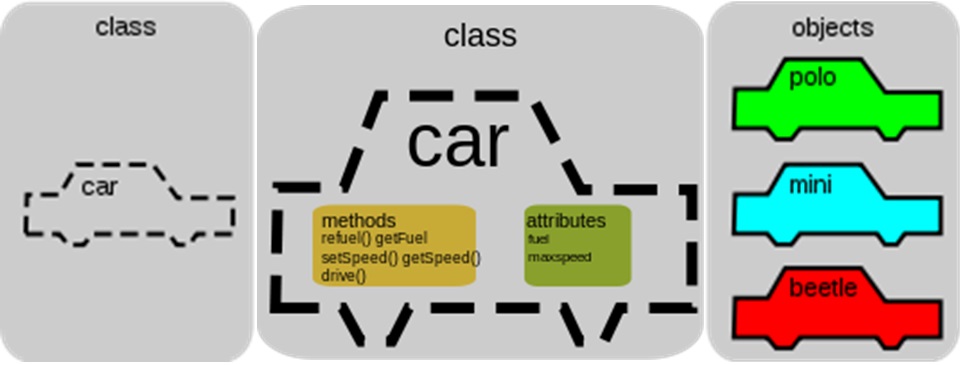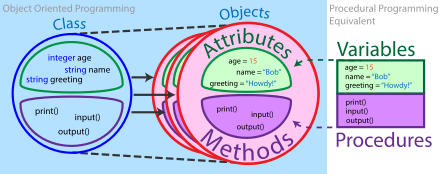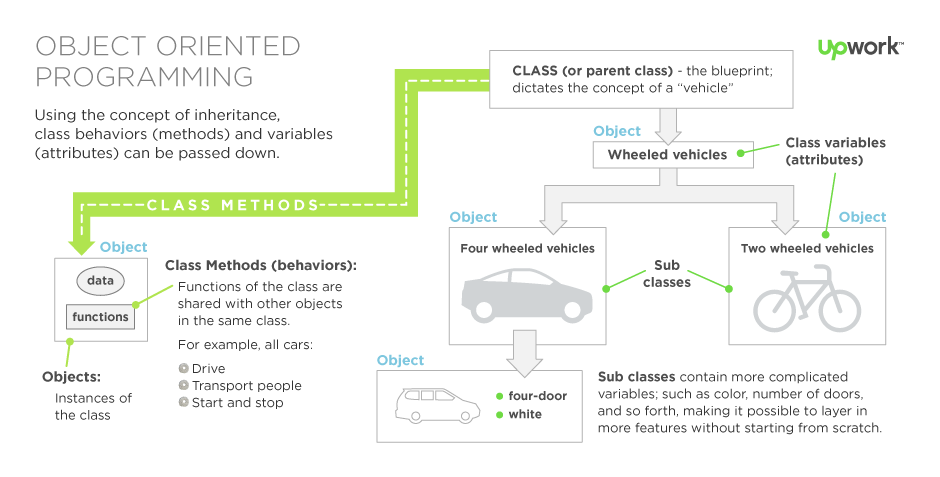OOP is a programming paradigm based on the concept of “objects,” which may contain data, in the form of fields, often known as attributes; and code, in the form of procedures, often known as methods. |
|
Classes
A class is a construct or prototype from which objects are created. A class defines constituent members which enable class instances to have state and behavior. Data field members enable a class object to maintain state and methods enable a class object’s behavior. |


|
Objects
A feature of objects is that an object’s procedures can access and often modify the data fields of the object with which they are associated. In OOP, programs are designed by making them out of objects that interact with one another.

|


|